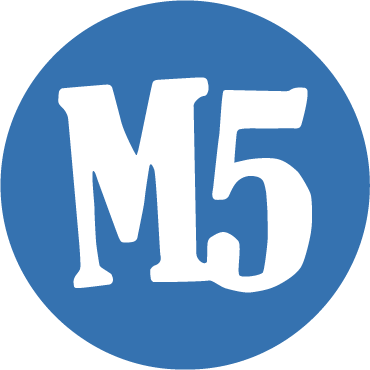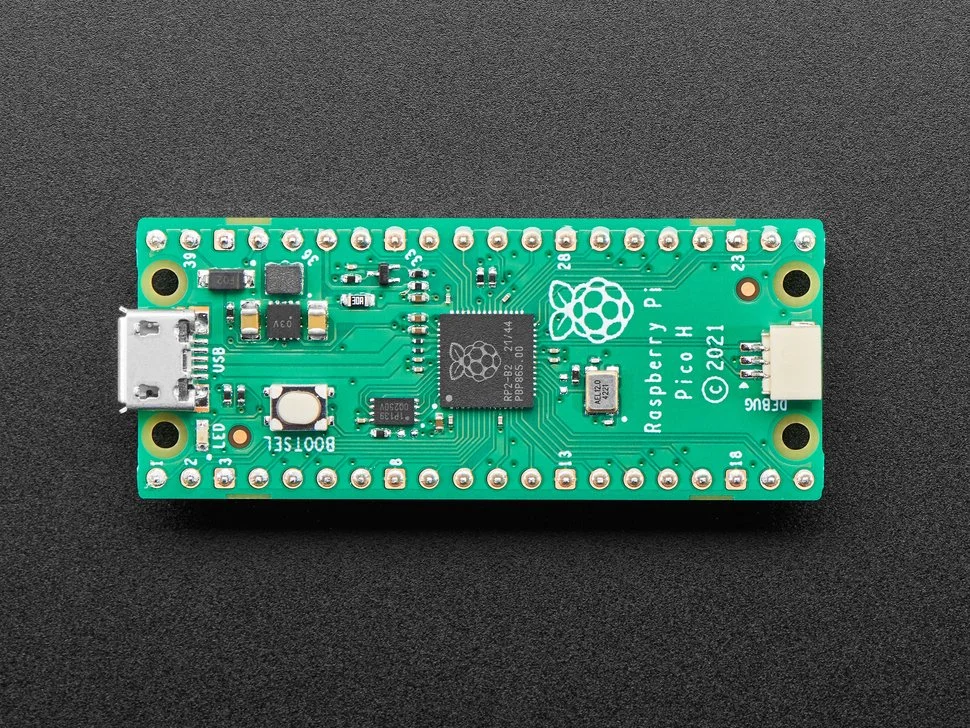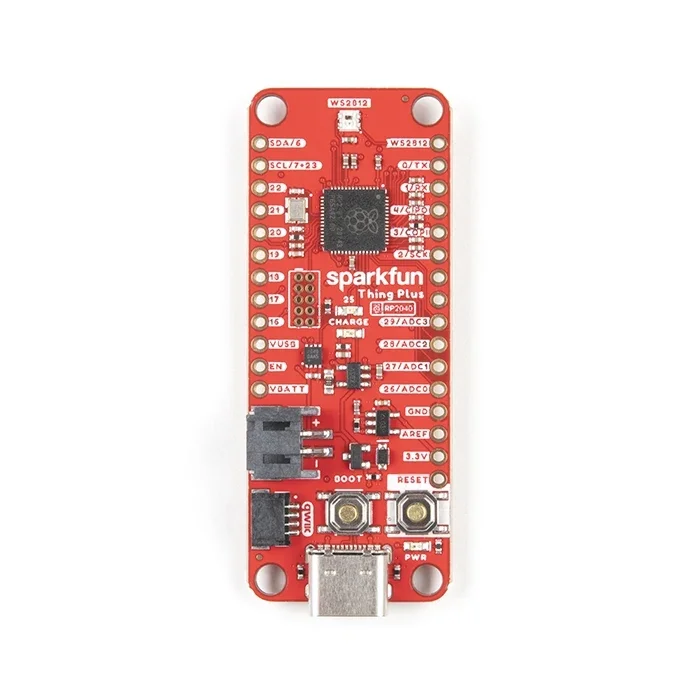The Adafruit Feather and the Sparkfun Thing Plus form factor
On the M5 Microcontroller’s parts wall, you might notice a small “F” symbol on many of the boards we stock. This marker tells you that the board form factor is Feather, which was developed by the electronics store Adafruit.
In this blog post, I want to demystify and also justify why M5 carries so many Feather boards. You likely have two questions: Why did we pick this form factor? And also what’s so great about it?
First lets look at an example of two boards that use the same chip, one that everyone should get familiar, which is the RP2040 used on the Raspberry Pi Pico:
Shown here is a standard Pico from the Raspberry Pi Foundation, for connectors it uses a Micro USB-B and a 3-pin JST connector for Serial Wire Debugging (SWD).
It is important to note that most companies design their boards using proprietary form factor, as these manufacturers have different design goals. In the case of the Pico, the main goal was to provide a cheap board. This meant cutting down on the feature set, which brought the cost down to $4 a board. This is excellent for anyone who wants to pick up and use an RP2040 microcontroller without a high-cost barrier, however, Adafruit saw an opportunity to capitalize on the lack of a standard form factor.
Shown here is a Feather RP2040, analogous to a Pico in terms of computing power. You might immediately notice the connectors are different. Here we get to see that this Feather board comes with a LiPo/LiPoly 2-pin header next to a USB-C connector (many previous Feather board revisions used the Micro USB-B connector) and a STEMMA QT/Qwiic connector used for I2C protocol (Check out the I2C vs. SPI blog post, and Stemma QT/Qwicc sensor blog post to learn more)
You might be asking what is so important about these connectors, they’re nice to haves only, right? Well, yes and also no. The importance here lies in the layout. The Feather is not only standardizing certain connectors that make building projects easier, they have also made it easier to mix-and-match what would otherwise be separate shields/HATs (Hardware Attached on Top) which are expansions to your chosen microcontroller board. This is why Adafruit also created Featherwings, which are easily interchangeable HATs that can breakout anything from wireless chips to displays, for example.
Shown here is a Featherwing OLED, a very common component for any project, displays are usually used to visually provide important information. With the Feather form factor, this display becomes swappable with multiple boards rather than with just one.
It doesn’t stop there, Feather boards also have more standardization. All Feather’s use 3.3V logic, not 5V! Also a Feather with “Express” it its name is fully compatible with Circuit Python.
So now we see what the Feather is trying to accomplish, what then is Sparkfun’s Thing Plus about? Well the Thing Plus is the exact same form factor and is only a naming scheme. When you see a the phrase Thing Plus it is fully interchangeable with the phrase Feather. I’ll prove it here:
Right here you can see a RP2040 Thing Plus, which low and behold has the exact same form factor, with a slight difference in connector placement.
Hopefully this was insightful and helpful for understanding why M5 loves to use these boards. We at M5 value modularity and ease-of-use when making projects. Using Stemma QT/Qwiic connectors for I2C, the LiPo/LiPoly battery connector, and a Featherwing HAT, you can very simply hook up a lot of your project, making fast prototyping easy!




